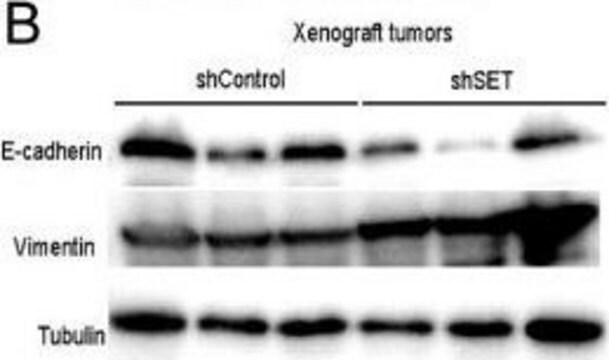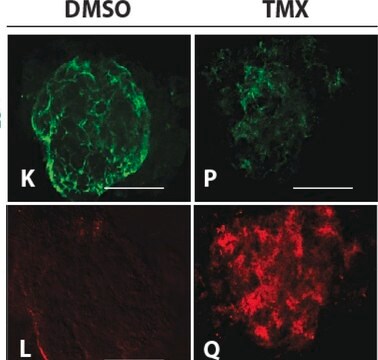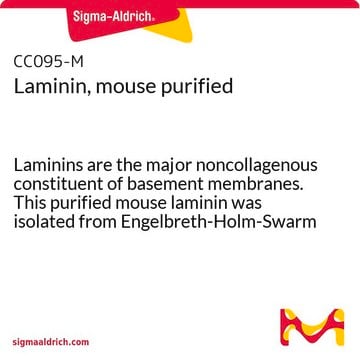AB1620
Anti-Vimentin Antibody
CHEMICON®, goat polyclonal
Seleccione un Tamaño
$472.00
Fecha estimada de envío28 de mayo de 2025
Seleccione un Tamaño
About This Item
$472.00
Fecha estimada de envío28 de mayo de 2025
Productos recomendados
Nombre del producto
Anti-Vimentin Antibody, serum, Chemicon®
origen biológico
goat
Nivel de calidad
forma del anticuerpo
serum
tipo de anticuerpo
primary antibodies
clon
polyclonal
reactividad de especies
human
reactividad de especies (predicha por homología)
mammals
fabricante / nombre comercial
Chemicon®
técnicas
immunocytochemistry: suitable
immunohistochemistry (formalin-fixed, paraffin-embedded sections): suitable
western blot: suitable
Nº de acceso NCBI
Nº de acceso UniProt
Condiciones de envío
dry ice
modificación del objetivo postraduccional
unmodified
Información sobre el gen
human ... VIM(7431)
Especificidad
Inmunógeno
Aplicación
Immunocytochemistry
Western blot
Optimal working dilutions must be determined by end user.
Cell Structure
Cytoskeleton
Descripción de destino
Forma física
Almacenamiento y estabilidad
Nota de análisis
Breast carcinoma tissue, Colon, Prostate, Tonsil, Tonsilar lymphoma, Uterus, Ureter
Otras notas
Información legal
Cláusula de descargo de responsabilidad
¿No encuentra el producto adecuado?
Pruebe nuestro Herramienta de selección de productos.
Opcional
Código de clase de almacenamiento
10 - Combustible liquids
Clase de riesgo para el agua (WGK)
WGK 1
Punto de inflamabilidad (°F)
Not applicable
Punto de inflamabilidad (°C)
Not applicable
Certificados de análisis (COA)
Busque Certificados de análisis (COA) introduciendo el número de lote del producto. Los números de lote se encuentran en la etiqueta del producto después de las palabras «Lot» o «Batch»
¿Ya tiene este producto?
Encuentre la documentación para los productos que ha comprado recientemente en la Biblioteca de documentos.
Protocolos
Step-by-step culture protocols for neural stem cell culture including NSC isolation, expansion, differentiation and characterization.
Active Filters
Nuestro equipo de científicos tiene experiencia en todas las áreas de investigación: Ciencias de la vida, Ciencia de los materiales, Síntesis química, Cromatografía, Analítica y muchas otras.
Póngase en contacto con el Servicio técnico








